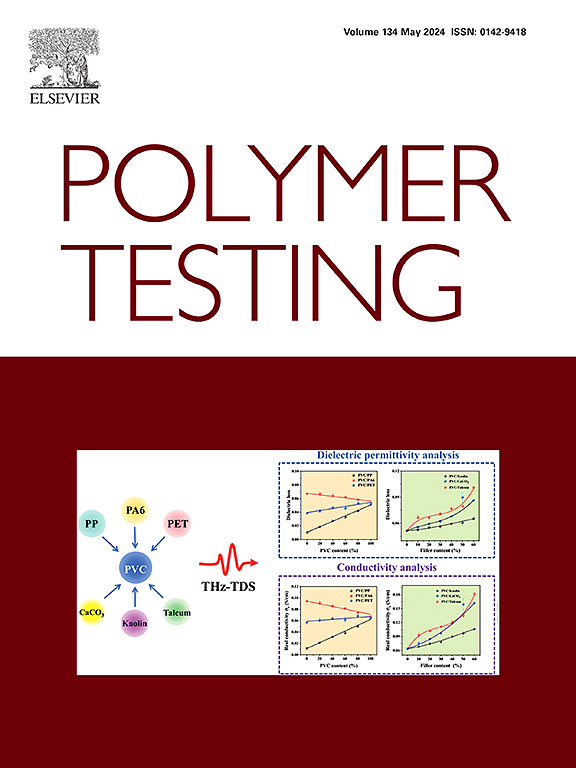Synchronous application of DIC and DVC techniques for the global-local characterization of carbon fiber-reinforced composite laminates
IF 5
2区 材料科学
Q1 MATERIALS SCIENCE, CHARACTERIZATION & TESTING
引用次数: 0
Abstract
DIC is capable of continuously measuring the global deformation behavior of a specimen because its scanning can be done quickly over a wider observation area. While the DIC information is limited to the surface on which a speckle pattern is applied, DVC can compute three-dimensional strain fields inside a material. However, DVC data can be obtained over a smaller region at a limited number of load levels. Here, the DIC and DVC techniques are simultaneously utilized for the first time. The previous in situ test setup of the authors based on synchrotron radiation computed tomography was modified to add the DIC capability. The in situ testbed was installed with a CCD camera with blue lighting to obtain images for DIC analysis. The opaque tubular frame of a micro-tensile stage was newly fabricated with a transparent material causing minimal optical distortion. The qualities of speckle pattern images obtained through the transparent tube were carefully evaluated. The combination of the DVC and DIC techniques was demonstrated with an open-hole tensile test. The global and local failure progression of the composite was non-destructively characterized. Especially, a load-displacement curve without machine compliance was obtained because the deformation of the specimen could be directly measured owing to the DIC technique. The resolutions of DVC and DIC in the presented study were 0.65 μm and 2.27 μm, respectively. This specification is expected to provide unprecedented results that can truly validate multi-scale simulation models.

DIC和DVC技术同步应用于碳纤维增强复合材料层合板的全局-局部表征
DIC能够连续测量试样的整体变形行为,因为它可以在更广泛的观察区域内快速完成扫描。虽然DIC信息仅限于应用散斑图案的表面,但DVC可以计算材料内部的三维应变场。但是,DVC数据可以在有限数量的负载级别上在较小的区域内获得。这是DIC和DVC技术首次同时应用。作者先前基于同步辐射计算机断层扫描的原位测试装置进行了修改,以增加DIC能力。原位试验台安装了一个带蓝色照明的CCD相机,以获取DIC分析所需的图像。采用透明材料制备了微拉伸台的不透明管状框架,使光学畸变最小。仔细评估了通过透明管获得的散斑图案图像的质量。通过裸眼拉伸试验验证了DVC和DIC技术的结合。对复合材料的整体和局部破坏过程进行了非破坏性表征。特别是,由于DIC技术可以直接测量试件的变形,因此获得了不受机器服从的载荷-位移曲线。本研究的DVC和DIC分辨率分别为0.65 μm和2.27 μm。该规范有望提供前所未有的结果,可以真正验证多尺度模拟模型。
本文章由计算机程序翻译,如有差异,请以英文原文为准。
求助全文
约1分钟内获得全文
求助全文
来源期刊

Polymer Testing
工程技术-材料科学:表征与测试
CiteScore
10.70
自引率
5.90%
发文量
328
审稿时长
44 days
期刊介绍:
Polymer Testing focuses on the testing, analysis and characterization of polymer materials, including both synthetic and natural or biobased polymers. Novel testing methods and the testing of novel polymeric materials in bulk, solution and dispersion is covered. In addition, we welcome the submission of the testing of polymeric materials for a wide range of applications and industrial products as well as nanoscale characterization.
The scope includes but is not limited to the following main topics:
Novel testing methods and Chemical analysis
• mechanical, thermal, electrical, chemical, imaging, spectroscopy, scattering and rheology
Physical properties and behaviour of novel polymer systems
• nanoscale properties, morphology, transport properties
Degradation and recycling of polymeric materials when combined with novel testing or characterization methods
• degradation, biodegradation, ageing and fire retardancy
Modelling and Simulation work will be only considered when it is linked to new or previously published experimental results.
 求助内容:
求助内容: 应助结果提醒方式:
应助结果提醒方式:


